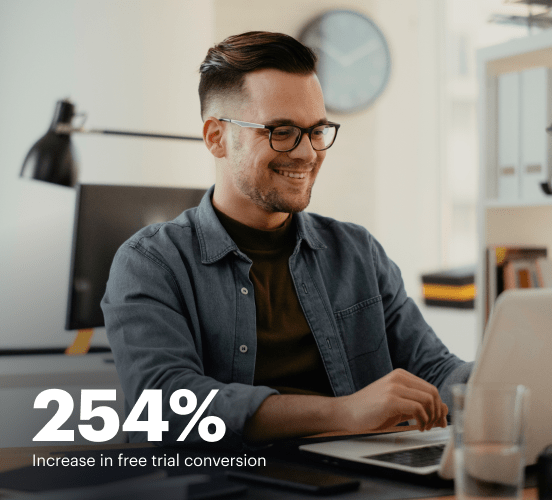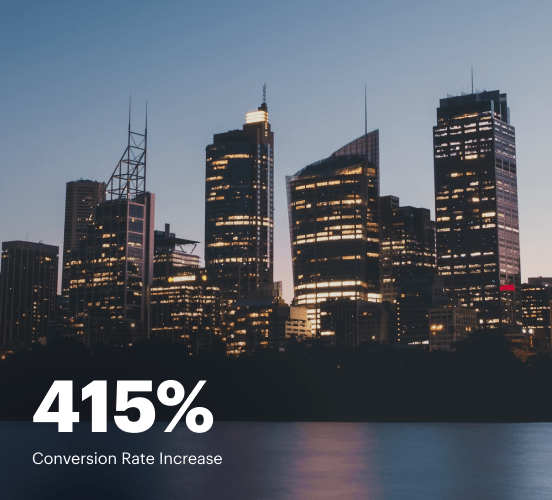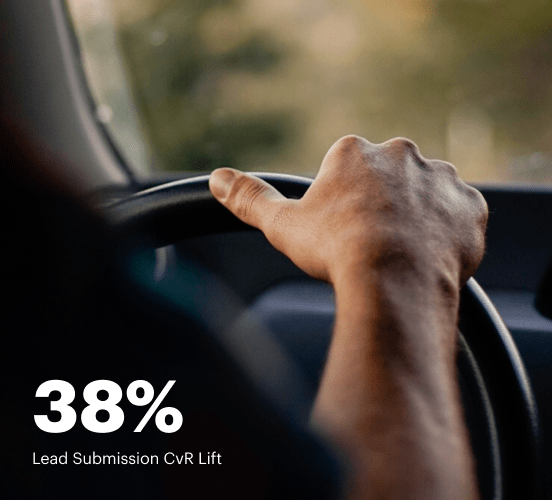How Shopify vs. Canva vs. Instapage stack up against each other
Compare Instapage with Shopify and Canva to create high-converting landing pages. With personalization, optimization, and collaboration tools, Instapage helps you deliver experiences that drive results.
Get startedSee how Instapage stacks up against the competition
| Feature | Instapage | Other builders |
| Drag-and-Drop Tools | ||
| Conversion-optimized templates | ||
| Manual and AI-powered A/B Tests | ||
| AI content suggestions | ||
| Popups and sticky bars | ||
| Canvas and grid blocks | ||
| Reusable and global elements | ||
| Form and popup builders | ||
| Built-in Heatmaps | ||
| Central analytics dashboard | ||
| Ad-to-page personalization and collections | ||
| Contacts, lists, and email | ||
| Dedicated, full-service CRO experts | ||
| Enterprise-ready platform |
Leading the way in building high-performing landing pages





Why Instapage is the smarter choice for your campaigns
Get everything you need to build, scale, and optimize high-converting landing pages—without coding.

Easier page building without coding
Instapage offers a flexible and seamless page creation experience with a library of 500+ conversion-focused layouts, Instablocks®, a drag-and-drop builder, and AI content generation. With technologies like Thor Render Engine®, you can create on-brand, mobile-responsive landing pages that load quickly and start converting during initial visitor clicks.

More insights — better results
Instapage lets you see in detail how each landing page experience and variation is performing so you can make targeted changes that boost page conversions. Use heatmaps for a better understanding of on-page activities, run A/B tests and AI-assisted experiments, and then track and evaluate results within robust analytics dashboards.

More personalized experiences
Instapage lets you quickly create high-performing landing pages tailored to each of your ad campaigns. Deliver personalized experiences for distinct audiences using dynamic text replacement. Effortlessly align specific advertisements to unique pages with AdMaps. Monitor audience-level metrics using our advanced data tools.

Built-in collaboration
Instapage collaboration capabilities bring your entire team together to speed up the process of landing page review, approval, and launch. No more frustrating and unnecessary revisions or edits scattered across emails. Provide instant feedback, conduct real-time page edits, and securely share your pages with outside stakeholders.

Free up time for your business
Invest time into business growth, not busy work. Launch landing pages faster with reusable forms and templates. Build once, reuse forever.
Explore all integrations






Easier page building without coding
Instapage offers a flexible and seamless page creation experience with a library of 500+ conversion-focused layouts, Instablocks®, a drag-and-drop builder, and AI content generation. With technologies like Thor Render Engine®, you can create on-brand, mobile-responsive landing pages that load quickly and start converting during initial visitor clicks.
More insights — better results
Instapage lets you see in detail how each landing page experience and variation is performing so you can make targeted changes that boost page conversions. Use heatmaps for a better understanding of on-page activities, run A/B tests and AI-assisted experiments, and then track and evaluate results within robust analytics dashboards.
More personalized experiences
Instapage lets you quickly create high-performing landing pages tailored to each of your ad campaigns. Deliver personalized experiences for distinct audiences using dynamic text replacement. Effortlessly align specific advertisements to unique pages with AdMaps. Monitor audience-level metrics using our advanced data tools.
Built-in collaboration
Instapage collaboration capabilities bring your entire team together to speed up the process of landing page review, approval, and launch. No more frustrating and unnecessary revisions or edits scattered across emails. Provide instant feedback, conduct real-time page edits, and securely share your pages with outside stakeholders.
Free up time for your business
Invest time into business growth, not busy work. Launch landing pages faster with reusable forms and templates. Build once, reuse forever.
Explore all integrationsGet started with Instapage in a few steps
-
Create your Instapage account
Start with Instapage by signing up via Google or your email. You'll get access to a free 14-day trial to discover Instapage capabilities. Feel free to cancel anytime during the 14-day trial if you decide that our product is not suitable for your business. -
Build and personalize your page
Create your first landing page from scratch or choose a template from 500+ customizable layouts. Use the drag-and-drop builder to add page elements, fonts, and backgrounds, refine content with AI, or add custom HTML, Javascript, and CSS. -
Review and make edits
Collaborate on page designs and streamline review processes. Invite your team members and stakeholders to review, edit, and provide feedback on your landing page. Collaborate knowing your page is confidential and only accessible to authorized users. -
Publish and track page performance
Publish your page to a domain or custom URL. Connect your pages to the ads you've created and track page performance within the analytics dashboard, run A/B tests and AI experiments, analyze results, and continuously optimize your landing page to maintain high conversions.
Instapage vs. Shopify vs. Canva – The Ultimate Showdown for Marketers
Selecting the right tool for your landing pages can often feel like assembling a dream team of superheroes. Each technology comes with its unique powers and quirks, making the decision process both exciting and daunting. Just as superheroes protect their cities, marketers need strong tools to enhance their campaigns and drive conversions. In this article, we’ll pit Instapage against Shopify and Canva, three heavyweights in the digital marketing arena. Our goal? To help you uncover which platform empowers you to create stunning landing pages that not only reduce costs but also boost conversions. Get ready for a friendly rivalry that promises to illuminate the path to marketing success and increase brand trust, customer loyalty, and conversion rates. (min:200 words, add the small paragraphs in this paragraph.)
Meet the Contenders: A Digital Smackdown
Welcome to the ring, where Instapage, Shopify, and Canva are ready to showcase their strengths. Instapage helps marketers produce effective landing pages through advanced customization and analytics, making it a go-to for conversion-focused campaigns. Meanwhile, Shopify might be known primarily as an e-commerce platform, but it also offers robust landing page solutions with built-in storefront capabilities. Lastly, Canva shines as a design powerhouse, allowing users to create visually appealing landing page graphics that can capture attention at first glance. In this face-off, we’ll explore each contender's strengths and weaknesses, highlighting what makes them unique. (min:200 words, add the small paragraphs in this paragraph.)
Feature Face-Off: What’s Inside the Toolbox?
Template Selection and User-Friendliness
Let’s kick things off with a discussion about template variety and user experience across all platforms. Shopify boasts a selection of sleek themes that can be easily customized to build landing pages but is primarily designed for e-commerce. Canva, focusing more on design, provides user-friendly templates that cater to non-designers looking to create visually stunning pages quickly. Although effective, the user experience can sometimes feel limited when it comes to conversion-focused functionalities. Instapage, in contrast, excels with its expansive library of customizable templates, offering A/B testing options and analytics specifically designed to enhance conversion rates. This is a significant advantage for marketers looking for precision in their campaigns. (min:200 words, add the small paragraphs in this paragraph.)
Instapage: A Partner in Conversion Optimization
When it comes to customization and conversion optimization, Instapage stands out as the ultimate weapon in a marketer's arsenal. The platform offers unmatched tools that allow for precision targeting, A/B testing, and seamless integrations with CRM systems and email marketing platforms. With these features, marketers can enhance their landing pages and tailor experiences to prospective customers, increasing the likelihood of conversions. Instapage also empowers marketers to reduce costs through better targeting efforts by creating only the pages that contribute to their objectives. In essence, Instapage isn’t just a landing page builder; it is a dedicated partner in building brand trust and customer loyalty. (min:200 words)
Round Two: Speed and Performance - Who's the Flash?
In our next round, we’ll engage you with a relatable story about the impact of loading speeds on user experience. We can all relate to the frustration of slow loading websites - it’s like waiting too long for your coffee during a busy morning rush; it can really put you off! This analogy serves as a reminder of how essential it is for landing pages to load quickly. Without speed, you risk losing potential conversions. All three platforms offer performance solutions, but which one will emerge victorious in this category? Let’s see how they measure up.
Advantages of Instapage:
- Highly optimized for quick loading times.
- Advanced caching and CDN support.
- Customizable scripts to enhance performance.
- A/B testing features increase efficiency.
Shopify's Performance Perks:
- Simple integrations that improve loading speeds.
- Strong server infrastructure supporting e-commerce.
- Optimized themes for mobile responsiveness.
Canva's Performance Strengths:
- Quick design options that allow rapid deployment.
- Export settings that align with web performance.
- Templates designed with lightweight elements.
In summary, while all three platforms have strategies to ensure quick load times, Instapage clearly leads this race with its specialized focus on optimizing landing pages for speed and performance. Marketers looking to enhance user experience and decrease bounce rates should consider Instapage as their go-to option.
Round Three: Usability - A Friendly Introduction
As we step into the usability arena, it’s essential to note that a welcoming interface can make all the difference. Users coming from any skill level will find inviting environments across these platforms. Shopify’s interface is straightforward, making it accessible to beginners, yet it also caters to experienced developers with code editing capabilities. Canva, designed with simplicity in mind, allows those with limited design experience to create beautiful landing pages without overwhelming complexity. Instapage does not fall behind either; it offers intuitive drag-and-drop features and robust tutorials that guide new users to success without intimidation. Regardless of where you start, you’re well on your way to becoming proficient with any of these platforms. (min:200 words, add the small paragraphs in this paragraph.)
Round Four: Support Services - Who's Got Your Back?
Now let’s shift our focus to the heroes behind the scenes: customer support! Each of these platforms embodies unique qualities that make them stand out in support services. Shopify provides 24/7 support via phone, email, and live chat, ensuring immediate assistance for users facing challenges. Canva also offers solid support options, featuring a robust help center filled with articles and tutorials, alongside community forums for peer assistance. Instapage shines in this category with its dedicated customer success managers for enterprise plans and extensive documentation that helps users maximize the platform’s capabilities. With such support options, it’s clear that each platform is equipped to assist users during their journeys. (min:200 words, add the small paragraphs in this paragraph.)
Round Five: Pricing Plans - Finding the Right Fit
Moving on to the final round, let’s talk pricing. Each platform offers various pricing structures catering to different target audiences. Shopify’s pricing tiers cater primarily to e-commerce ventures but also include features for creating landing pages. Canva provides a free version, allowing newcomers to explore the platform before committing financially, with Pro plans offering expanded features. Instapage, while generally at a premium price, justifies its cost with advanced features that target marketers aiming for high conversion rates. In this comparison, while each pricing plan has unique advantages, it will depend on what you value most: affordability, features, or performance. (min:200 words)
As we wrap up this battle of the tools, remember ensuring the right choice depends on your goals and needs. Do you prioritize functional features, customer support, or budget flexibility? While all three platforms possess their strengths, use your insights to make a decision that best aligns with your marketing strategy. For those eager to enhance their landing page game, consider experimenting with Instapage through its free trial to see how it can elevate your marketing efforts.










